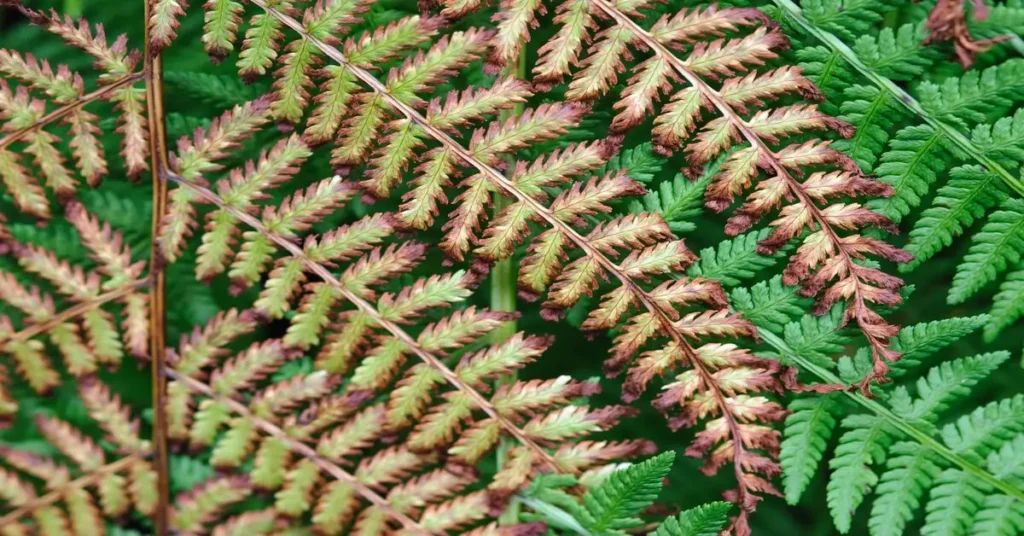Ferns are a popular choice for indoor and outdoor gardens alike. However, if you’ve noticed your fern turning brown and crispy, it’s a sign that something is amiss. This comprehensive guide will delve into the reasons behind this phenomenon and offer solutions to keep your fern lush and green.
Why Do Ferns Turn Brown?
Ferns can turn brown for various reasons, including environmental factors and diseases. According to a study published in the Journal of Botanical Sciences, ferns are particularly sensitive to humidity and light conditions changes. Overwatering or underwatering can also lead to root rot, a common cause of browning in ferns. Pests like spider mites can suck the moisture out of the leaves, leading to dry, brown fronds.
Lack of Humidity
Ferns are native to humid environments. Dry air, mainly due to indoor heating during winter months, can cause the leaves to turn brown and crispy.
Underwatering
Ferns love consistently moist soil. Underwatering leads to dry soil, causing brown tips on the fronds.
Overwatering and Root Rot
Too much water can lead to root rot, resulting in brown leaves and a dying plant.
Direct Sunlight
Ferns prefer indirect light. Exposure to direct sunlight can scorch the leaves, making them brown.
Types of Ferns Most Susceptible to Browning
Different types of ferns have varying levels of susceptibility to browning. Here are some common types:
1. Boston Ferns are highly susceptible to low humidity levels and require consistent moisture.
2. Maidenhair Ferns: Known for their delicate fronds, they quickly turn brown if exposed to direct sunlight.
3. Staghorn Ferns: These unique ferns prefer high humidity and indirect light. Browning usually occurs due to over-fertilization or low humidity.
Seasonal Care for Ferns
Ferns require different care routines based on the season:
Spring and Summer: This is the growing season for most ferns. They need more water and a balanced fertilizer.
Fall and Winter: During these months, reduce watering and avoid fertilizing, as most ferns are dormant.
How to Prevent Your Fern from Turning Brown
Increase the Humidity
Place your fern in a humid environment. Use a humidifier or place a pebble water-filled tray under the plant.
Proper Watering
Keep the soil moist but not waterlogged. Make sure the pot has a drainage hole to prevent root rot.
Indirect Light
Place your fern in an area with indirect light. Too much sun can cause brown and crispy leaves.
Fertilizing Wisely
Over-fertilizing can lead to brown fronds. Use a balanced fertilizer and follow the recommended guidelines.
How to Revive a Brown and Crispy Fern
Snip Off Brown Fronds
Remove any brown or affected leaves to encourage new growth.
Re-Evaluate Watering Schedule
If the soil feels dry, you may need to water your fern more frequently.
Move Your Fern
If your fern is outdoors and experiencing too much sun or wind, consider moving it to a more sheltered location.
Conclusion
Understanding why your fern is turning brown and crispy is the first step in reviving it. You can enjoy lush green ferns throughout the year by providing the right conditions and care.

